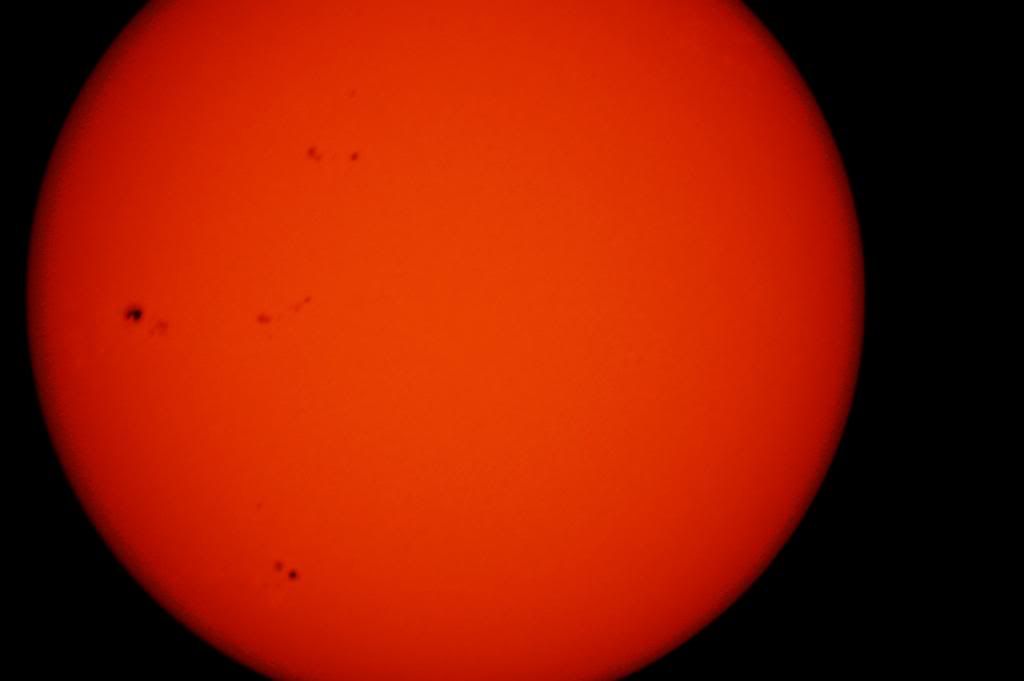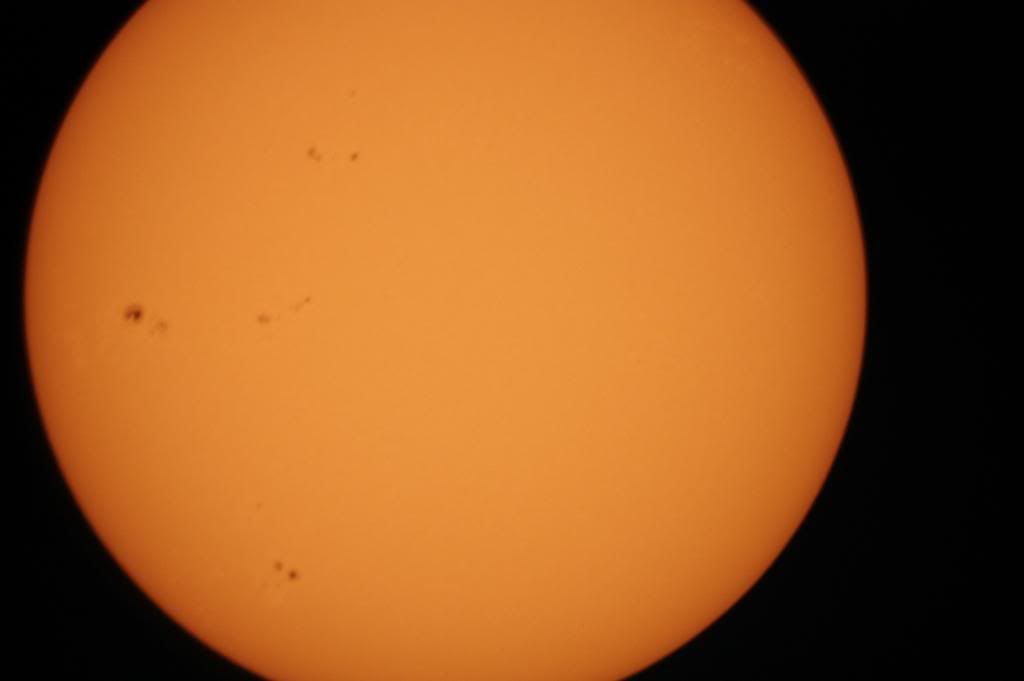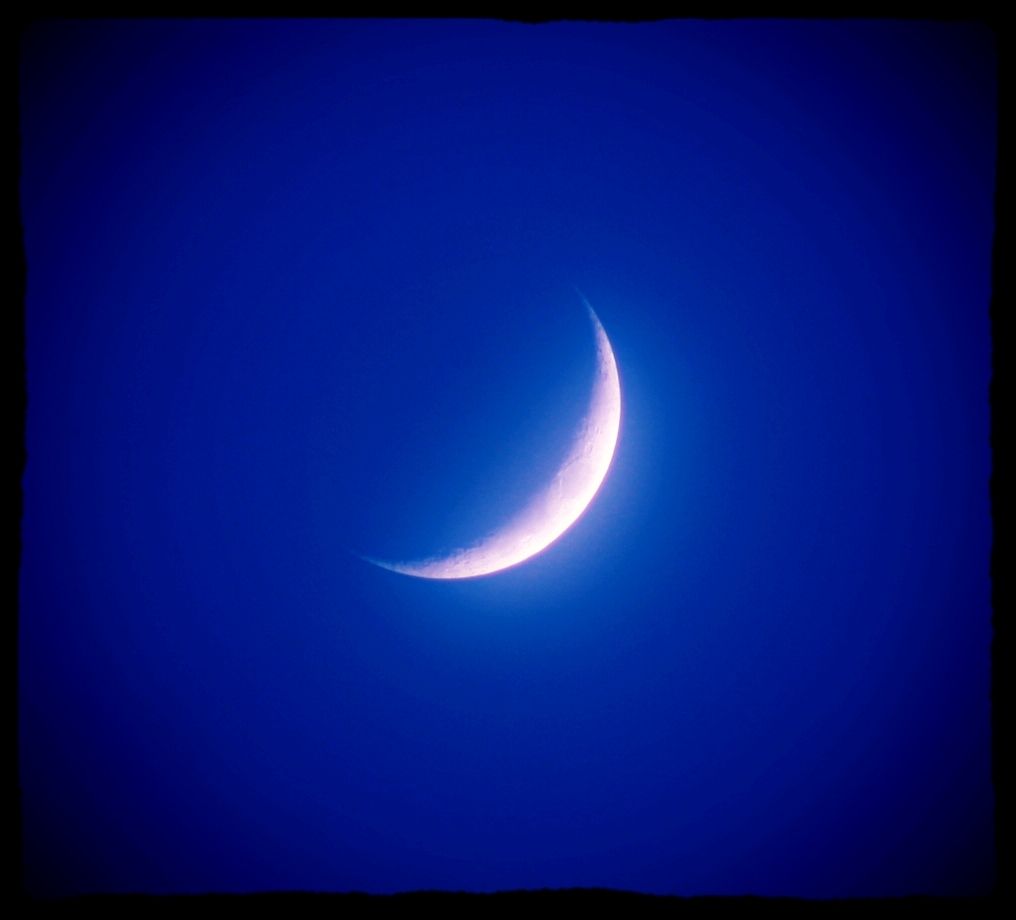Location: Morning-Little Lepreau, NB. Evening-Dartmouth, NS
Date Time: May 13, 2013 1000-1130hrs and 2015-2030hrs Atlantic Standard Time
Weather: Morning in Little Lepreau- started off cool, 11degrees Celsius, slightly hazy to clear, very light breeze then around 1030 wind picked up to a gusty state. By 1130 there were solid 30mph southerly winds. By 1300 winds may have passed 50mph.
Evening in Dartmouth-warm, approximately 20 degrees Celsius, intermittent rain clouds coming from south to north partially blocked view of western sky. No wind, kind of humid.
Attendance: Myself
Equipment: Canon DSLR camera with tripod, 75-300mm lens, 8 inch Meade LX 200 telescope.
Objectives: To capture images of sunspots with DSLR camera and the new planetary imager. To capture the conjunction between the crescent Moon and Jupiter.
Report: The morning session was greatly affected by high gusty winds, which picked up from next to nothing to over 50mph sustained winds, from the south by noon. The very solid tripod for the telescope greatly helped, although many images were blurred due to the shaking.
It was known that there were going to be winds, but the forecast also called for mainly clouds, so was pleasantly surprised to see it nice and clear and sunny at 0930 although it was cool. Definitely jacket and hat weather. It was decided at this time to try to get some images of the Sun. Shortly after the scope was set up, the winds picked up speed to a steady 20mph, with telescope stuff blowing everywhere.
While setting up, remembered that last time, the scope could not locate Jupiter. At the May meeting of the Saint John Astronomy club, Mike P. thought that maybe the time setting on the scope was off. Sure enough, went into the Date Time settings and the scope was set for the completely wrong date and time. Thanks again to Mike P.!!! Just goes to show how important it is to talk to other people who share the same interest. Telescopes, and their accessories can be very complicated devices, and it cannot be said enough how important it is to talk to others in the know. It can be challenging, but that's what make it such a rewarding hobby.
After set up, decided to try using the tracking system, so that constant adjusting wouldn't have to be done. Since there were no stars in the sky to align the scope on, a compass was used to point the scope straight north, then inclined the scope so that it was pointing to where Polaris might be. Then picked Mercury in the GoTo mode, but the scope said, "Too Close To Sun". With the solar filter firmly attached, the scope was then manually, with the keypad, pointed at the Sun, which was getting high in the SE direction. With a little doing, the Sun was found, but the tracking did not work perfectly. It did need to be adjusted rather frequently.
Once scope was set up, and the Sun was located in the filtered scope, the 2" 30mm eyepiece was used to for viewing. At this time it was seen that the 2" right angle attachement piece that attaches connects the eyepieces to the telescope, the mirror has much dust on it, which affects the view. Despite this, many Sunspots were easily visible, with many more that were sort of tickling the eye. It may be time to do an all around cleaning of the all the mirrors, eyepieces and accessories. This can ruin an observing session, if it is not done right, so some thought has to go into it. This observer has never even attempted to clean a eyepieces or primary mirrors up to this point in time.
As the wind started to pick up, it was then decided to try to get some images, before it got too windy. Many images were obtained with the DSLR camera, but due to the wind and my schedule for that day, it was determined not to try out the Planetary Imager on this day.
The evening session was done in Dartmouth, NS. Looked for Venus and Jupiter, which were suppose to be low in the Western sky at sunset, but they were not seen as it was very cloudy. It was much warmer in Dartmouth, with very little wind. Thin crescent Moon could be seen through breaks in large, heavy, dark rain clouds there were moving slowly across the evening sky.
No satellites or shooting stars were observed during this session.
No satellites or shooting stars were observed during this session.
 |
| Sunspots 1742, 1743, 1744, 1747, 1746, 1747 according to spaceweather.com |
 |
| May 13, 2013 1025hrs AST |
 |
| Crescent Moon from Dartmouth, NS May13, 2013 2020hrs |
 |
| Crescent Moon from Dartmouth, NS May13, 2013 2020hrs |

No comments:
Post a Comment